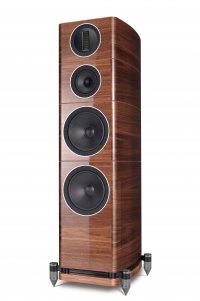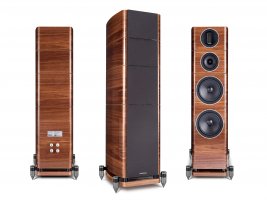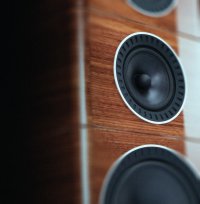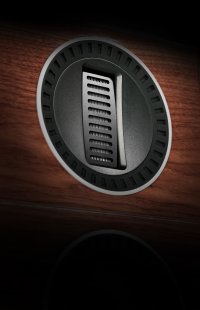A few months ago, I wrote about the way some of the great audio companies were being taken over by venture capitalists. This meant that some of those companies had lost their identities and their classic products were changed into very safe audio. This ‘new audio’ does not offend and also does not excite. I was lamenting what was happening and disappointed that some great companies were being changed into makers of safe audio, competent, but not much else.
But that is NOT what is happening here.
International Audio Group (IAG) is a Chinese company who have picked up the reins of some great and classic UK companies such as Quad, Mission, Audiolab and Wharfedale. They also own Luxman Audio in Japan. And from what I can see they have brought out the best of the two audio worlds with great UK (and Japanese) designed products and modern, large-scale Chinese production and quality assurance. Of course, I am not saying UK (and Japanese) companies can’t manufacture good, quality assured products or Chinese engineers can’t design audio.
For those who do not know Wharfedale, they are one of the earliest pioneers of high-fidelity audio reproduction. Founded by Gilbert Briggs in 1932, Briggs won first prize in a competition with the first drive unit he ever made – the ‘Bronze’ model, and from then on built a strong reputation for pioneering within what is now firmly established as the ‘Hi-Fi’ industry.
In the 1950s Gilbert Briggs embarked on an ambitious collaboration with a close friend and colleague, Quad’s ‘Peter Walker’. With Quad supplying the amplification and Wharfedale building the loudspeaker systems, they introduced what was to become an industry-defining series of concerts wherein audiences were invited to experience live versus recorded music first-hand. Touring the UK and the USA and playing at venues as auspicious as the Royal Festival Hall in London and Carnegie Hall in New York, Gilbert Briggs introduced listeners to the delights of quality hi-fi and stereo sound.
Like a lot of UK audiophiles, one of my first sets of speakers were the Wharfedale Dentons. They were the classic 80s box shape with a 5” bass and 1” tweeter. IAG has fairly recently released a much improved and updated 80th Anniversary model of the Denton, the Denton 80. This speaker has Kevlar speaker cones, and it is keenly priced due to being made in China and a lot of people have been impressed with the sound quality.
The main designer of speakers in IAG is Peter Comeau. Peter Comeau has been involved with audio for decades by designing, retailing and reviewing audio equipment. Peter has been involved in designing speakers from many famous companies including Mission, Heybrook and now the audio design division of IAG. Peter started his design career with Mission with the Classic Mission 780 speakers. He then went on to establish Heybrook with Stuart Mee in 1979 as they thought the budget speakers available at that time were not that good. And they were right.
And now Peter is the main loudspeaker designer at IAG and the main designer behind six brands of loudspeakers including the Wharfedale Elysian 4s.
Given his many years of experience, what is the main ethos of Peter Comeau and Wharfedale in designing these speakers? It is the same ethos that existed when Gilbert Briggs started making speakers in the 1950s, the music. Yes, science is used to achieve that objective, but it is not the objective. Even now, where far more science is used to design speakers, it is always in service of the music. So, science is used to get the right designs, but the fine-tuning is done by ear and in this case over a month was spent tuning the speakers to sound right and musical. What does right and musical mean? It means Peter Comeau is happy to sit there and listen to the loudspeakers, all day, and enjoy the complete experience, all the time. If he hears that from speakers he is designing, he knows they are good and can go into production.
Wharfedale has a great reputation for making less expensive speakers but has always had one set of speakers where the cost constraints were relaxed and the Elysian 4s are that set. But why the name Elysian? Elysian comes from Greek mythology and refers to a blissful place the virtuous go in the afterlife. Will these speakers put you in a blissful state, without the need to pass on? Read on.
Peter acknowledges that some speakers are very detailed and upfront in their presentation but the Elysian 4s are designed to be detailed and natural and allow the listener to enjoy them over a whole day and not go for a quick hit in 30 mins and eventually become wearing.
I was able to borrow a run-in set of Elysian 4s from my good friends at Audio Consultants and all three of us were needed to manhandle these speakers into place, but once in place, they are easy to ‘walk’ when doing adjustments.
The Elysian 4s are large speakers at 1188mm on plinth x 402mm on plinth x (432+30) mm with terminals, or 46.8”x 16.5”x18.2” weighing in at 50kgs (110lbs). They have 4 speaker units per speaker with two 8.5” bass drivers, a 6” mid-range unit and a large 3.5”x 1” AMT tweeter.
That is one large speaker. The finish is utterly superb and the company says they are a Piano-Lacquer finished cabinet, created with details of true craftsmanship, through to the AMT (Air Motion Transformer) high-frequency transducers and European manufactured bass drivers.
Normally AMTs are only found in expensive speakers as they are far more expensive than dome tweeters but given IAG’s resources that may no longer be true.
These speakers look as good as the best and I include the lovely Sonus Fabers in that comparison. They are 3-way speakers and can be bi-wired and that is how I used them throughout.
And the big surprise is the cost. I asked three audio friends what they thought they cost and they said £10,000, £12,000 and £15,000 based on the looks and the speaker array. They are £6,800, which is outstanding value, obviously depending on the sound quality.
Positioning was fairly straightforward and because the bass has a floor loaded port via the plinth it is less critical than most other port loaded speakers especially those with rear-facing ports. The port is also a bit more than a hole in a speaker as it uses a profiled slot to equalise the pressures in the speakers to those in the room. I got them away from the walls (both back and side) and that suited them and ensured the bass did not become too much. A bit of fine-tuning with the toe-in and we were there.
I added the speakers to my system consisting of a Voyd 0.5 Ref TT, SME V and Audionote IO II and S2 step up for analogue and an Audionote CD4T/DAC 4.1x and a Jays Audio CD2 Mk II, Gaia DDC and Denafrips T+ on digital duties, with a Vitus RI101MKII, ARC Ref 5 and ARC Ref 110 the amplifiers. Cables were from Puritan (mains), Audionote, Cut Loose and Audioquest with an assortment of Quiescent blocks in the mains.
First BIG surprise, these speakers disappeared. If I closed my eyes then they ‘disappeared’ as the sound stage was so large and 3D, in audio terms, the sound seemed to be coming from a much smaller speaker. I have owned many large speakers in the past and the best at ‘this trick’ was the Wilson Watt puppies as the sound comes from a small box on the top of the speakers. But this Wharfedale did better. It is amazing to hear a very large orchestra playing Mars (Kansas City Orchestra conducted by Michael Stern on Reference Recordings) with superb imaging and fooling you into believing a smaller speaker is producing the images. But as Mars builds up in intensity those two 8.5” bass units make their presence felt. Wow. And the big powerful drum strikes have a huge impact in the intro of Copland’s Fanfare for the Common Man (also a Reference Recording) where the timpani strikes make a big powerful statement. Watch the power with this music as these speakers are 92db efficient and have a 4-ohm impedance. The Vitus will donate up to 600 watts/channel which with these speakers generates a large amount of dBs. You have been warned. I never heard them compress and I conceded before they did.
On to my test list of tracks. Starting with 2 Cellos playing the Game of Thrones Medley. This is a modern recording with microphones on the individual cellos giving them a very close-up sound with some stirring music designed to get you interested in the TV program. This track allowed the music to flow and the pace to speed up to build up the tension in the music. The Wharfedales enjoyed this track, the music had a big soundstage with an emphasis on the cellos and it was a forte of these speakers. The speakers gave the music its extended soundstage, kept control of the ebb and flow, even when it gets intense and still provides all the ‘extra’ detail from the close miking of the cellos. The power and attack of these instruments blended well with the orchestra and made for a great intro. As a complete contrast Ember by WhoMadeWho is modern electro/pop music. It starts with some ringing bass with lots of reverb and is then accompanied by drums and voices with enormous amounts of reverb. Of course, all sorts of effects join in and the track goes along at a good pace. The Wharfedales gave a very natural feel to this track (odd as it is electronic) but the power of the drums in the slower middle section of the track was felt as I was playing this loudly, to see how the Wharfedales (and me) coped. No problem.
Onto something closer to real instruments: Tarova from Snarky Puppy. A funky jazz track with a good variety of instruments. This music played very naturally and the tonal qualities of the instruments were very easy to identify. This music comes from skilled musicians having a great time and that came across clearly. Any issues, possibly the pace and timing of the track was not the fastest I have heard but it was still very good. And before I knew it the track had finished. Nothing for it but to play the whole album. A musical diversion.
Female voice is always a good way to show how speakers cope with the higher registers and Rhiannon Giddens singing Birmingham Sunday is an ideal track. Some speakers can make it sound light and slightly jolly which of course it is not. It is about a Klu Klax Kan attack on a church where four girls were killed. The Wharfedales gave the full emotion in Rhiannon Giddens’s voice and showed that this was a sad song, well sung. The music added to the voice and did not subtract as some speakers can do.
I then tried music to push things along and started with Mike Valentine’s recording of Beethoven’s 5th Piano concerto recorded in St Martins in the Field where I was in the audience with fellow reviewer Alex 54. This music features the Locrian Ensemble of London Conducted by Rimma Sushanskaya. And once again the imaging from such a big speaker was captured well as this recording was done using just three valve microphones and a Jecklin disc. The power in the music came across and it was very easy to hear the size and reverb from St Martins in the Field. When played at a reasonable level it took me back to the recording 3 years ago. No, it did not sound the same but it got close.
And I managed to persuade Mike Valentine to give me access to some of his DSD recordings. I listened to the Toccata and Fugue in D Minor recorded in Temple Church at Double DSD resolution. The atmosphere of this music and the power of the bass pedals came across really naturally and with real drive. It is one of the better recordings I have heard, whether that is due to DSD or Mike, or both, I do not know but it was spellbinding and the Wharfedales played their part. I will do a fuller review of Mike’s DSD recordings later on, but a new ultra-test piece for me.
So, is it all sweetness and light then? I perceive two issues one real the other depends on you. The real issue, these are big and powerful speakers, especially with those 2x8.5” bass units. I think they need to be used in a reasonably sized room. They do not need a 15m long room but I would not try to get them working ideally in a room smaller than 4-4.5m. I am not saying they would not work, they will, but to get them well away from the walls and give them a chance to let the bass develop needs a reasonably sized room. I am sure Wharfedale can offer an alternative if you can’t accommodate them. The second issue is their neutral tonal balance. If you need to have speakers that make the music more exciting than it is, then these speakers may not be the ones for you. By this, I mean speakers with a pushed forward mid-range (more detail) or a mid-range with a dip (falsely spacious sound) or a bumped-up bass or high frequency; all designed to make the music ‘more exciting’. If that is what you want then the Elyssian4s may not be for you. They are neutral and natural and will not ‘juice up’ the sound. A design choice which I fully agree with as ‘juiced up' speakers become wearing when listening for any length of time.
Overall, then, I find it difficult to criticise these speakers. They look superb, are real high-quality furniture and the sound is incredibly neutral and natural with good dynamics. Yes, there are better-sounding speakers but at a much higher price. If you can accommodate them and you are looking for speakers up to £10-12K then you would be foolish not to hear them. A bit of a
System | 3-way floorstanding speaker |
| Driver | |
| Treble | 27x90mm AMT |
| Midrange | 6.0" (150mm) coated fibre glass matrix cone |
| Bass | 8.5" (220mm) coated fibre glass matrix cone |
| Nominal Impedance | 4Ω (compatible 8Ω ) |
| Crossover Frequency | 340Hz, 3.1kHz |
| Frequency Response | 30Hz - 22kHz (+/-3dB) |
| Sensitivity | 92dB (2.83V @1m) |
| Recommended Amplifier Power | 15 - 250W |
| Weight | 49.5kg/pcs |
| Dimensions (H x W x D)mm | 1188 on plinth x 402 on plinth x (432+30) with terminals |





